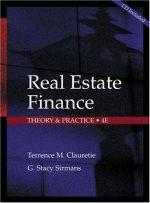Earl plans to keep the stocks or bonds for 12 years, that is, until the bond matures. However, he wants to make the 7% per year real return and make up for the expected 4% per year inflation. For what amount must he sell the stocks after 12 years, or buy the bonds now to ensure he realizes this return? Do these amounts seem reasonable to you, given your knowledge of the way that stocks and bonds are bought and sold?

Earl is an engineer who wants a predictable flow of money for travel and vacations. He has a collection of stocks in his retirement portfolio, but no bonds. He has accumulated a total of $50,000 of his own funds in low-yielding savings ac- counts and wants to improve his long-term return from this nonretirement program nest egg. He can choose additional stocks or bonds, but has decided to not split the $50,000 be- tween the two forms of investments. There are two choices he has outlined, with the best estimates he can make at this time. He assumes the effects of federal and state income taxes will be the same for both forms of investment. Stock purchase: Stocks purchased through a mutual fund would pay an estimated 2% per year dividend and appre- ciate in value at 5% per year. Bond purchase: If he purchased a bond, he would have a predictable income of 5% per year and the $50,000 face value after the 12-year maturity period. 5. Earl plans to keep the stocks or bonds for 12 years, that is, until the bond matures. However, he wants to make the 7% per year real return and make up for the ex- pected 4% per year inflation. For what amount must he sell the stocks after 12 years, or buy the bonds now to ensure he realizes this return? Do these amounts seem reasonable to you, given your knowledge of the way that stocks and bonds are bought and sold? Earl is an engineer who wants a predictable flow of money for travel and vacations. He has a collection of stocks in his retirement portfolio, but no bonds. He has accumulated a total of $50,000 of his own funds in low-yielding savings ac- counts and wants to improve his long-term return from this nonretirement program nest egg. He can choose additional stocks or bonds, but has decided to not split the $50,000 be- tween the two forms of investments. There are two choices he has outlined, with the best estimates he can make at this time. He assumes the effects of federal and state income taxes will be the same for both forms of investment. Stock purchase: Stocks purchased through a mutual fund would pay an estimated 2% per year dividend and appre- ciate in value at 5% per year. Bond purchase: If he purchased a bond, he would have a predictable income of 5% per year and the $50,000 face value after the 12-year maturity period. 5. Earl plans to keep the stocks or bonds for 12 years, that is, until the bond matures. However, he wants to make the 7% per year real return and make up for the ex- pected 4% per year inflation. For what amount must he sell the stocks after 12 years, or buy the bonds now to ensure he realizes this return? Do these amounts seem reasonable to you, given your knowledge of the way that stocks and bonds are bought and sold







